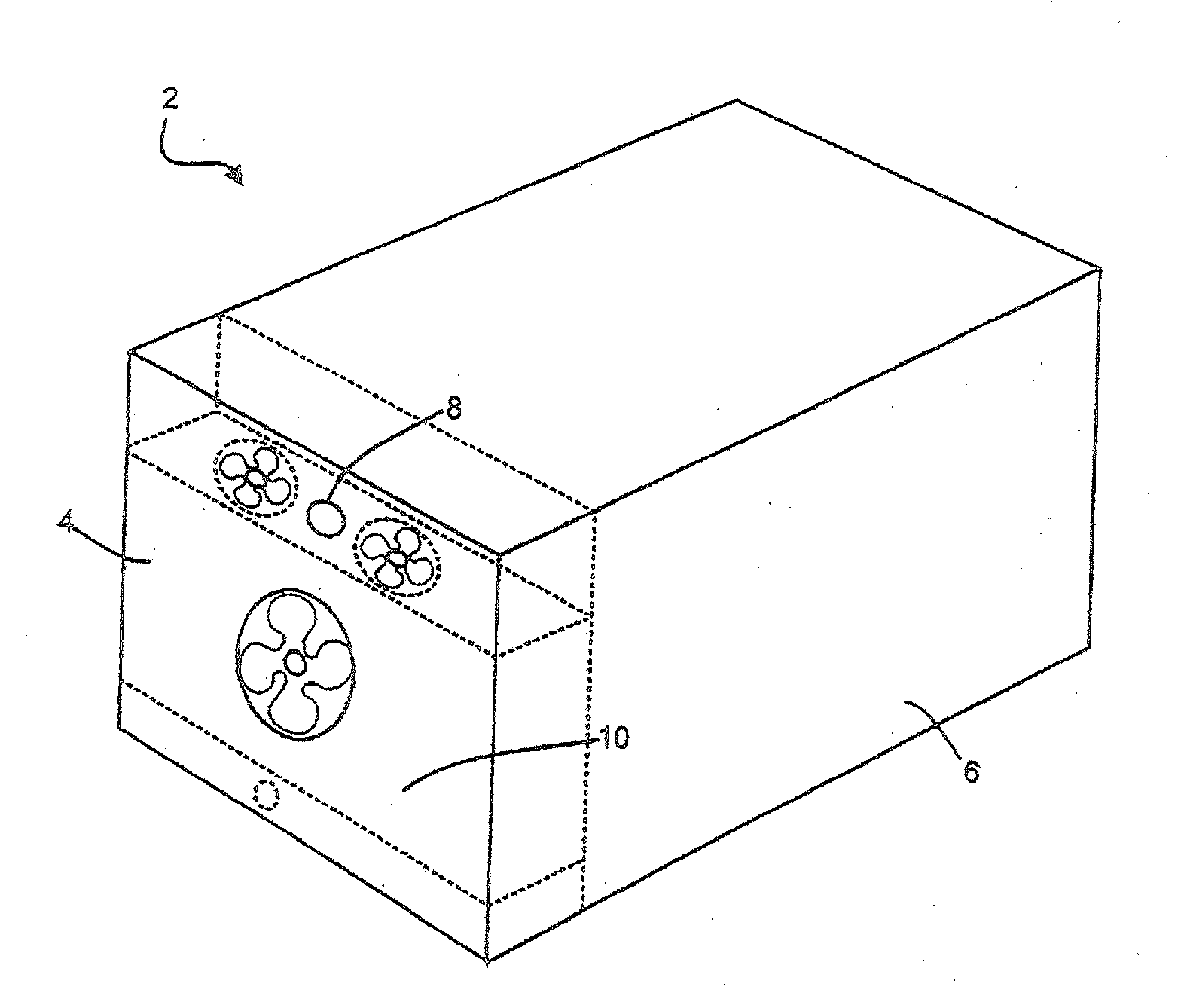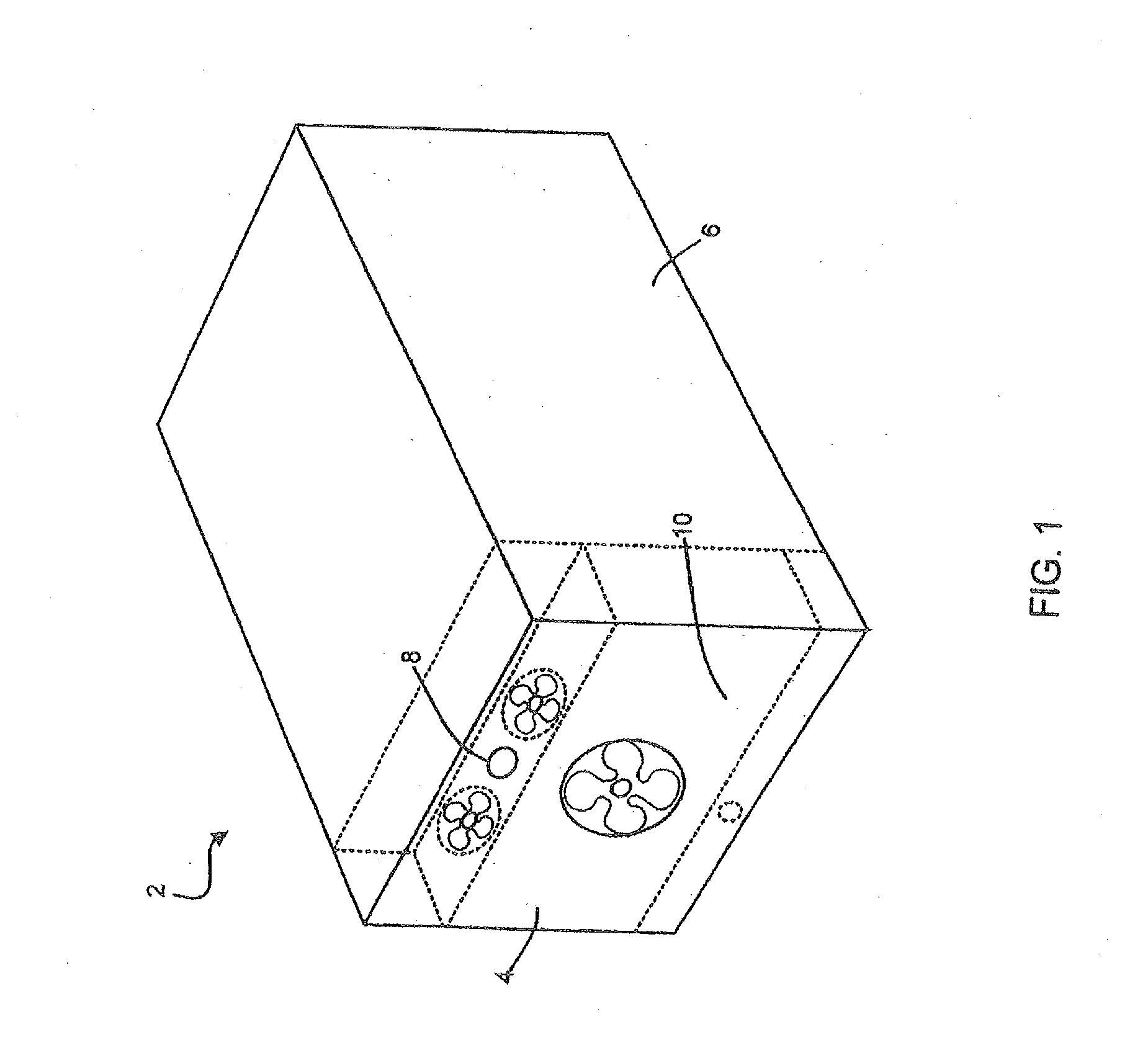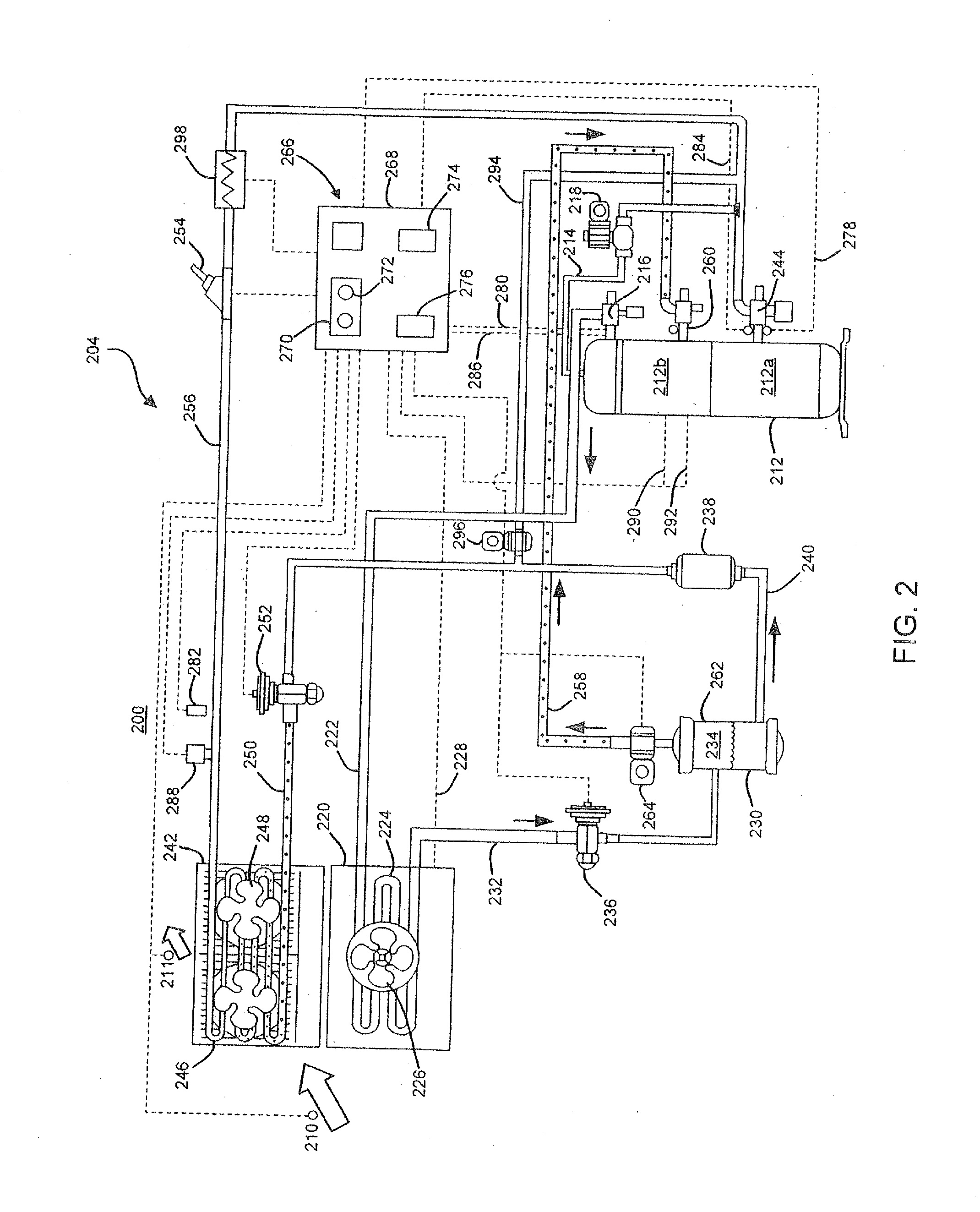Capacity and pressure control in a transport refrigeration system
a refrigeration system and capacity control technology, applied in refrigeration components, mechanical equipment, light and heating equipment, etc., can solve the problems of transport refrigerant vapor compression systems that are subject to cycling between an operating mode and a standstill mod
- Summary
- Abstract
- Description
- Claims
- Application Information
AI Technical Summary
Benefits of technology
Problems solved by technology
Method used
Image
Examples
Embodiment Construction
[0025]Referring to FIG. 1, a refrigerant vapor compression system 2 may include a transport refrigeration unit 4 coupled to an enclosed space within a container 6. The container 6 may be a temperature controlled environment, such as a cargo box of a refrigerated transport truck, trailer or container, or a display case, merchandiser, freezer cabinet, cold room or other perishable / frozen product storage area in a commercial establishment, or a climate controlled comfort zone within a residence, office building, hospital, school, restaurant or other facility. In the disclosed example, the refrigerant vapor compression system 2 is of the type utilized on refrigerated transport truck. As shown in FIG. 1, the transport refrigeration unit 4 is configured to maintain a programmed thermal environment within the container 6.
[0026]In FIG. 1, the transport refrigeration unit 4 is mounted at one end of the container 6. However, the transport refrigeration unit 4 may also be mounted to one or mor...
PUM
 Login to View More
Login to View More Abstract
Description
Claims
Application Information
 Login to View More
Login to View More - R&D
- Intellectual Property
- Life Sciences
- Materials
- Tech Scout
- Unparalleled Data Quality
- Higher Quality Content
- 60% Fewer Hallucinations
Browse by: Latest US Patents, China's latest patents, Technical Efficacy Thesaurus, Application Domain, Technology Topic, Popular Technical Reports.
© 2025 PatSnap. All rights reserved.Legal|Privacy policy|Modern Slavery Act Transparency Statement|Sitemap|About US| Contact US: help@patsnap.com



